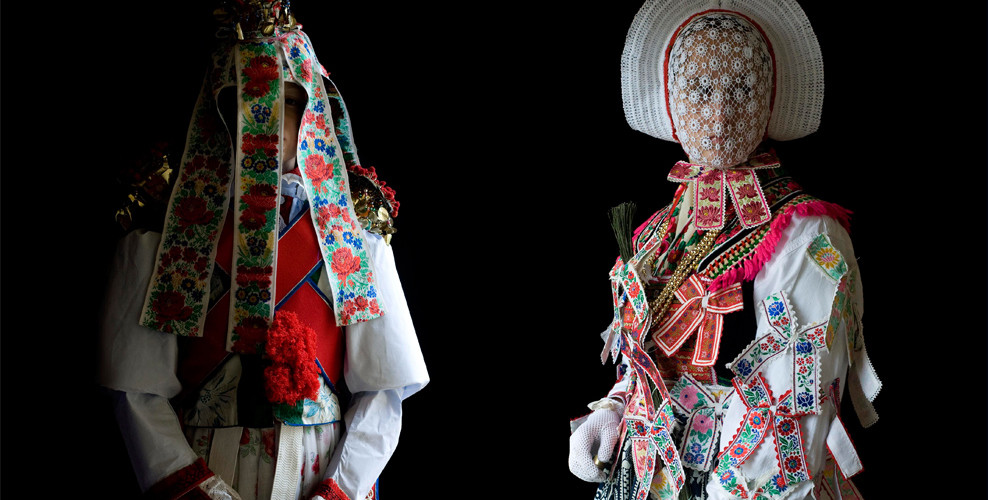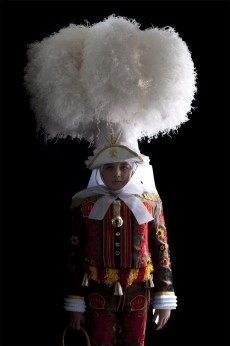 Befitting our obsession with costume and design, Kid-In brings you the photography of German born, Berlin-based fine artist Iwajla Klinke.
Befitting our obsession with costume and design, Kid-In brings you the photography of German born, Berlin-based fine artist Iwajla Klinke.
Ritualism – that behind ancient and contemporary costuming as well as the tradition of formal portraiture used to capture these – is the essence of Klinke’s work.
In circumventing digital manipulation, the photographer separates herself from the tribe; a painterly lighting overshadowing any anthropological bent to her primarily aesthetic survey of ceremonial adornment across-the-world.
Similarly, the element of travel takes on more a quantum physics meaning for the artist. Mirroring ceremony, Klinke’s images appear to traverse at will the fabric of space and time; never seamlessly and thereby always synergistically.
However, it is as much the look of each sublime sartorial detail; fetishized things of pure yet decidedly un simple beauty, as it is the seduction of their esotericism that render Klinke’s work so intriguing in the here and now.
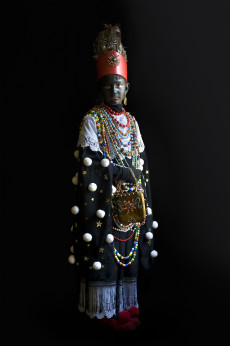 Where are you from and were the arts prominently featured in your childhood?
Where are you from and were the arts prominently featured in your childhood?
I was born and raised in Greifswald, a small town by the sea in Northern Germany. My mother studied painting over there. She and my grandfather, who was a German literature teacher, taught me a lot about how to view this world when I was a child. My mother taught me to see things around me the way she did, the way she wondered, the way she admired. And my grandfather introduced me to a world of wonderful stories, characters, places…all imaginary.
Both parents were in the arts?
Actually, my mother studied painting but then worked as a teacher of children. My father was an opera singer, but passed away when I was only 6 years old.
Where and what did you study?
I studied in Berlin; Art History and Islamic and Jewish sciences.
Were travel, history or anthropology of interest to you as a child?
I hardly ever traveled as a child. As far as history and anthropology can be of interest for a child, I was reading a lot about these. History I think is fascinating for 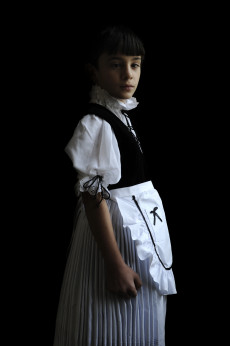 every child, it opens up so many new worlds and universes, especially for them. A child’s world is equally tiny and gigantic at the same time.
every child, it opens up so many new worlds and universes, especially for them. A child’s world is equally tiny and gigantic at the same time.
Was there a specific experience that helped motivate your decision to make art?
For me, I suppose that to take those photos was never a matter of deciding to do so. If there is something that you feel you need to do, you naturally just do it.
Why are you drawn to photographing youth?
Noteboom says in his book on a Spanish pilgrimage “There is a way of taking photos that can see the death.” Children in fact have a very specific relationship with death. Perhaps because they are not aware of it as we are. I will never forget the moment and time I learned of it first. It shattered my whole little universe and was so hard to understand. Just entering this world I think they are far closer to death in their specific way. Also many of the customs I am documenting deal with the struggle between winter and spring, life and death – like Easter, Carnival, most of the winter rituals, but also fertility rites now passed on to Sukkot, Corpus Christi, Pentecost, Shavuot and so on.
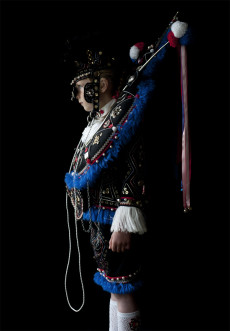 Is travel a large part of your creative process, or is it more research based?
Is travel a large part of your creative process, or is it more research based?
I guess it’s both, I spend most of my time researching and traveling.
Do the traditional costumes derive directly from the subject, or do you own a cache from various travels?
No, everything is as I find it at the place where the procession or feast is happening. I wouldn’t add or change anything.
I understand you use only natural light and avoid digital manipulation – deceptively simple-seeming techniques. Can you describe your process?
I travel with a very simple, dark background and take the photos as long as daylight is available. Usually at the houses where the children get dressed before going out to take part in a procession or ceremony.
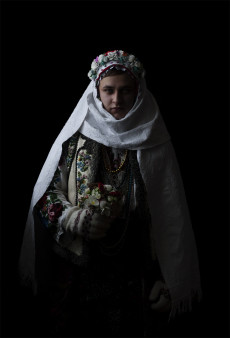 Who are some photographers or films that have influenced you?
Who are some photographers or films that have influenced you?
I think I am far more inspired by painting, early European painting. But Sugimoto, Evelyn Hofer, August Sander or Bunuel are some contemporary photographers and filmmakers I admire.
What draws you to ritual and ritualistic adornment?
I think I am captivated by the beauty and meaningfulness, or better, the symbolism, of every tiny detail of those adornments. They are sacred items, perhaps even idols in my eyes. The color of every ribbon has a meaning, the choice of flowers and plants used in the ceremony, every button is there on purpose. Most of the time they were passed on for centuries and represent a long-forgotten knowledge and time. There often is only a single old lady in the village that has the knowledge or authority regarding how everything is to be to be put in place. But also, the presence of the sacred and ceremonial via those adornments, masks and crowns, to me it’s simply mesmerizing.
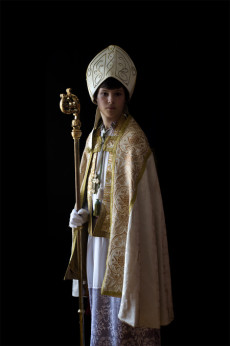 What are some perhaps less obvious, modern reverberations of such ancient rites and adornments?
What are some perhaps less obvious, modern reverberations of such ancient rites and adornments?
Sports for example, or rites of passage like Bar Mitzvah, Holy Communion and many more. But actually I think they are all very modern and ancient at the same time. This is what is so beautiful about them.
Why might an understanding of this connection across time be important?
For me, it’s more about the simultaneity of different layers of time, like traveling through time, which fascinates me, both visually, concerning a certain iconography, or physically, due to certain items; masks or idols passed on from another time.
Klinke is fresh off an exciting new round of work based in the Ukraine. Her most current series, Red Sandals and A Mirror for Gabriel, is currently on display at Galerie Voss, Dusseldorf, https://galerievoss.de
-Larissa Zaharuk

